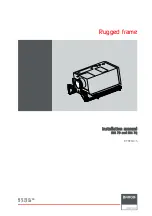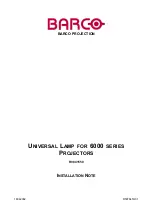
16
GAZELLE MANUAL
16
Bicycle Owner’s Manual
should leave a clear imprint in the palm of your hand.
(b) With a through-bolt or bolt-on system, tighten the
fasteners to the torque specifications in Appendix D or the
hub manufacturer’s instructions.
NOTE: If, on a traditional cam action system, the lever
cannot be pushed all the way to a position parallel to the
fork blade, return the lever to the OPEN position. Then
turn the tension adjusting nut counterclockwise one-
quarter turn and try tightening the lever again.
D (6) With a through-bolt or bolt-on system, tighten the
fasteners to the torque specifications in Appendix D or the
hub manufacturer’s instructions.
WARNING: Securely clamping the wheel with a cam
action retention device takes considerable force. If
you can fully close the cam lever without wrapping
your fingers around the fork blade for leverage, the lever
does not leave a clear imprint in the palm of your hand,
and the serrations on the wheel fastener do not emboss
the surfaces of the dropouts, the tension is insufficient.
Open the lever; turn the tension adjusting nut clockwise a
quarter turn; then try again. See also the first WARNING in
this Section, p. 18.
(6) If you disengaged the brake quick-release
mechanism in 3. a. (1) above, re-engage it to restore
correct brake pad-to-rim clearance.
(7) Spin the wheel to make sure that it is centered in
the frame and clears the brake pads; then squeeze the
brake lever and make sure that the brakes are operating
correctly.
c. Removing a disk brake or rim brake Rear Wheel
(1) If you have a multi-speed bike with a derailleur gear
system: shift the rear derailleur to high gear (the smallest,
outermost rear sprocket).
If you have an internal gear rear hub, consult your
dealer or the hub manufacturer’s instructions before
attempting to remove the rear wheel.
If you have a single-speed bike with rim or disk brake,
go to step (4) below.
(2) If your bike has rim brakes, disengage the brake’s
quick-release mechanism to increase the clearance
between the wheel rim and the brake pads (see Section
4.C, figs. 11 through 15).
(3) On a derailleur gear system, pull the derailleur body
back with your right hand.
(4) With a cam action mechanism, move the quick-
release lever to the OPEN position (fig. 8b). With a
through bolt or bolt on mechanism, loosen the fastener(s)
with an appropriate wrench, lock lever or integral lever;
then push the wheel forward far enough to be able to
remove the chain from the rear sprocket.
(5) Lift the rear wheel off the ground a few inches and
remove it from the rear dropouts.
d. Installing a disk brake or rim brake Rear Wheel
CAUTION: If your bike is equipped with a rear disk
brake, be careful not to damage the disk, caliper or
brake pads when re-inserting the disk into the
caliper. Never activate a disk brake’s control lever unless
the disk is correctly inserted in the caliper and the bike is
in an upright position.
(1) With a cam action system, move the cam lever to
the OPEN position (see fig. 8 a & b). The lever should
be on the side of the wheel opposite the derailleur and
freewheel sprockets.
(2) On a derailleur bike, make sure that the rear
derailleur is still in its outermost, high gear, position;
then pull the derailleur body back with your right hand.
Put the upper part of the chain on top of the smallest
freewheel sprocket.
(3) On single-speed or an internal gear hub, remove
the chain from the front sprocket, so that you have plenty
of slack in the chain. Put the chain on the rear wheel
sprocket.
(4) Then, insert the wheel into the frame dropouts and
pull it all the way in to the dropouts. Make shure that the
brake disc fits correctly in the caliper.
(5) On a single speed or an internal gear hub, replace
the chain on the chainring; pull the wheel back in the
dropouts so that it is straight in the frame and the chain
has about 1/4 inches of up-and-down play.
(6) With a cam action system, move the cam lever
upwards and swing it into the CLOSED position (fig. 8 a
& b). The lever should now be parallel to the seat stay
or pointing backwards and curved toward the wheel. To
apply enough clamping force, you should have to wrap
your fingers around the fork blade for leverage, and the
lever should leave a clear imprint in the palm of your
hand.
(7) With a through-bolt or bolt-on system, tighten the
fasteners to the torque specifications in Appendix D or the
hub manufacturer’s instructions.
NOTE: If, on a traditional cam action system, the lever
cannot be pushed all the way to a position parallel to the
seat stay, return the lever to the OPEN position. Then turn
the tension adjusting nut counterclockwise one-quarter
turn and try tightening the lever again.
WARNING: Securely clamping the wheel with a cam
action retention device takes considerable force. If
you can fully close the cam lever without wrapping
your fingers around the seat stay or chain stay for
leverage, the lever does not leave a clear imprint in the
palm of your hand, and the serrations on the wheel
















































